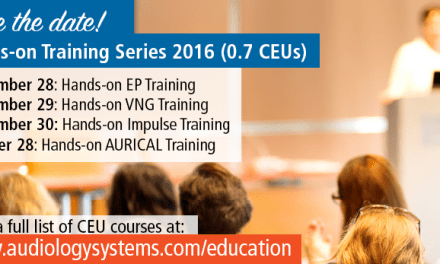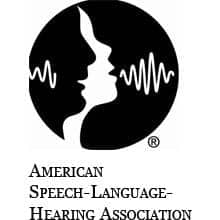In this issue, we asked manufacturers and distributors three questions about their cerumen management and otoscopy products:
- What are your best-selling products?
- Why are those items more popular than alternative products?
- Tell us about changes you envision down the road.
RICK GILBERT
vice president & general manager
Ear Technology Corporation
Johnson City, Tenn
When practitioners and users think about drying and sanitizing small electronic devices such as hearing aids, our Dry & Store line of products usually comes to mind quickly. But some professionals don’t realize that Dry & Store and Zephyr by Dry & Store are very good day-to-day cerumen management tools—for the hearing aid.
Most hearing aid solutions are prophylactic in nature, ie, they are designed to keep cerumen from clogging the receiver aperture. But springs and guards themselves need to be replaced or cleaned regularly, each of which requires active participation on the part of the end-user. Unfortunately, end-users don’t like to fool with the “gooey” end of their hearing aids, so operational problems continue to plague the industry.
Pulling the moisture out of cerumen shrinks it and makes it flaky, so it is much easier to remove with the flick of a finger or, in the case of embedded cerumen, a brush or wire tool. But because cerumen is a natural mixture that contains minerals, oils, skin debris, and good old-fashioned dirt, pulling moisture out of that mess requires an aggressive dryer, operating at a very low relative humidity. Enter Dry & Store, which can do what most heated boxes can’t, and that’s dry cerumen.
JOSEPH A. VESPE, MS, MBA
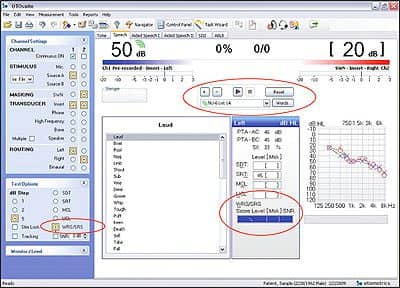
Joseph A. Vespe
director of operations
Hal-Hen Company Inc
Garden City, NY
Cerumen management continues to be an essential part of hearing health care. The basic setup uses an open-headed otoscope and curettes. Stainless steel curettes are very popular due to their durability and reusability. However, disposable plastic curettes are gaining ground due to the assortment of tips, a softer surface, and their ability to control cross-contamination.
In recent months, a new breed of vacuum aspirators have been introduced and have become top sellers, offering both economy and utility superior to those of previous offerings. In addition, we have a comprehensive offering of everything needed for cerumen management at very competitive prices.
Many new innovative variations, which enhance the technique, are now available. New affordable video otoscopy systems provide almost any practice with the means to archive procedures. We developed the EarView Versatile Video Otoscopy System specifically for use in cerumen management, as it greatly facilitates cerumen removal.
In the future, continued education for professionals, such as the cerumen management course offered by Rita Chaikin, AuD, along with innovative products such as Earigate, which helps keep ears cleaner longer for patients, and other innovations, will all play a part in enhancing a patient’s quality of life.

A.U. Bankaitis, PhD
A.U. BANKAITIS, PHD
clinical audiologist & vice president
Oaktree Products Inc
St Louis
Oaktree Products, a multiline distributor and hearing industry resource, has been involved in cerumen management education since 1992, when original policy statements identifying cerumen removal within the scope of audiological practice were issued.
Cerumen management requires clear visualization of the impaction and ear canal structures. With more practitioners involved in cerumen removal and with the advent of extended wear hearing instruments like the Lyric, there is an increased demand for advanced magnification options.
The Heine Loupe & Headlight is a self-contained LED headlamp with a rechargeable lithium-ion battery pack equipped with the highest-quality German optics in the form of a binocular loupe. The loupe provides 2.5x magnification with unparalleled clarity and depth of field.
The Welch Allyn Lumniview represents another portable, rechargeable headlamp equipped with a binocular scope for 3-D ear canal visualization.
Since both systems are worn on the head, hands-free lighting is truly achieved, enabling the practitioner to use both hands for cerumen removal and other applications.
Since LEDs are available in a variety of colors that absorb light differently, future advancements in otoscope and headlamp technology may provide the ability to change the color of illumination for enhanced visualization of the ear canal.

Kathy Palmersten
KATHY PALMERSTEN
account manager
Warner Tech-care Products Inc
Roseville, Minn
The Lighted Ear Curette by Bionics is the product I recommend to practitioners who request an ear light to use when doing a cerumen removal procedure. The bright white light is projected to the tip of the curette, illuminating the entire ear canal. The light source and the curettes are disposable, which reduces the risk of cross-contamination.
These curettes come in many shapes and sizes, making them an increasingly popular product. When I demonstrate the lighted ear curette, everyone agrees that it is the best product for cerumen removal.
JUSTIN BALL
executive vice president
Prescott’s Inc
Monument, Colo
Our best-selling otoscopy product is the Prescott’s Omni 10/Osm99, a surgical microscope used for cerumen management. This is used as an alternative to an otoscope or other device. The microscope allows for a better stereo view and the ability to see more clearly and precisely. The microscope can also be used for implantable hearing device implantation.
MEL GROSS, AUD, CCC-A, FAAA
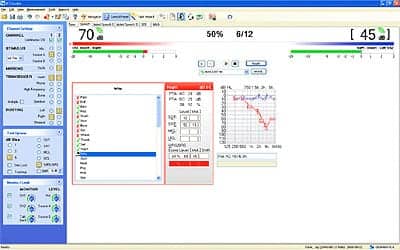
Mel Gross, AuD, CCC-A, FAAA
audiometric sales manager
Starkey Laboratories Inc
Eden Prairie, Minn
The Starkey StarMed Video Otoscope is our best-selling product. It serves multiple purposes: it can be used to look in the ears, and a curette can be attached to remove cerumen in the ear canal. In addition, this otoscope allows hearing care professionals to easily navigate down the receiver port of a hearing aid to inspect for cerumen or exudate that which may be affecting the instrument’s performance.
The StarMed Video Otoscope has multiple uses as an otoscope, cerumen removal tool, and hearing aid inspection tool. Additionally, it serves as an educational tool—both to see what’s actually going on in the ear canal and to demonstrate various controls and features of the hearing aid if a patient has vision problems.
Patients often return to a hearing care professional’s office complaining that the hearing aid has stopped working (often due to a plugged receiver port). The StarMed Video Otoscope gives the professionals a way to quickly look at the problem and in turn educate patients on how to keep their hearing aids performing at optimal levels.
I think the use of video otoscopes will continue to grow as more people see how they can be used as an educational tool as well as a clinical tool.
TERRY ROSS
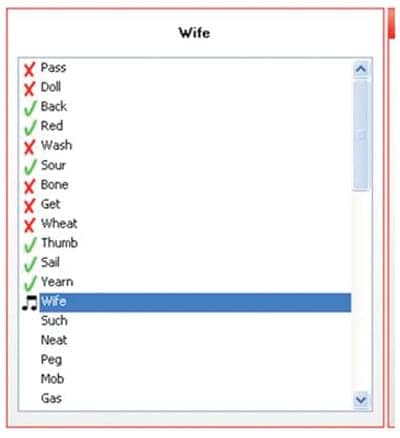
Terry Ross
vice president
MedRx Inc
Largo, Fla
MedRx Inc was founded on PC-based video otoscopy more than 17 years ago. Our goal with otoscopy was to provide superior computer imaging technology, simple intuitive operating software, and an integrated system designed to seamlessly connect to other PC-based instrumentation and software. The result was the MedRx Otoscope.
This handheld device utilizes a simple USB connection to any computer, monitor, or television, allowing the viewer to take and archive multiple photos to NOAH or other commercial databases. Photos can be annotated with notes or observations, and easily retrieved and/or transmitted via e-mail. The MedRx Otoscope utilizes standard disposable specula that can also be sanitized and reused and uses standard wax loops on the speculum to remove excess cerumen or debris.
Video otoscopy today encompasses more than just traditional ear canal and tympanic membrane inspection for the professional. It is now successfully being used for counseling patients who are not cleaning or maintaining their hearing aids properly. By showing them wax blockage, cracked tubes or housings, corroded battery contacts, and general maintenance issues on a large screen format, patients gain valuable insight into their hearing device’s care and maintenance.
We are also observing an increasing incidence of “historical video imaging” to protect the professional from any legal actions and to ensure they have given proper care to the patient while under professional guidance. In addition, some practitioners utilize video otoscopes to take full face pictures of their patients to keep on file. MedRx Otoscopes provide an optional full face lens to achieve this function.
The company envisions that future products in this category may be even smaller and more compact, possibly wireless (beyond Bluetooth) for convenience, and will surely have the ability to connect to any PC-media device for transferring or sharing files.
J. STUART HARRIS
CEO
MiraCell
Orem, Utah
Our best-selling product is ProEar by MiraCell. ProEar is popular because it works great. ProEar softens cerumen for easy removal without any caustic or damaging effect on the ear tissue. It is gentle and soothing. It’s made from natural plant extracts that easily absorb into the skin. It’s the perfect lubricant because it absorbs into the skin and nourishes the skin tissue.
ProEar helps keep ear tissue healthy, resulting in fewer remakes and returns because the ear stays healthy enough to tolerate hearing devices.
There are no plans to change the product at this time. We are investigating additional packaging and delivery options to help practitioners.
Cerumen Management: Through the Audiologist’s Scope
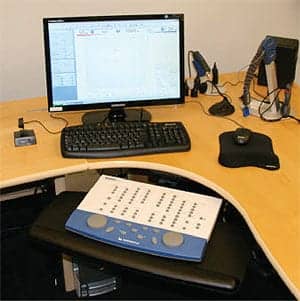
Gene McHugh, EdD
In addition to speaking to manufacturers and distributors, HRP had a conversation about cerumen management and otoscopy products with Gene McHugh, EdD, Colorado Springs Audiology Inc, Colorado Springs, Colo.
McHugh’s clients are mainly senior citizens, who utilize hearing aids that are often negatively affected by cerumen issues. As a result of the daily cerumen problems he sees in his office, McHugh is a big advocate of cerumen management.
“I consider it an underestimated part of our practice,” said McHugh. “Cerumen not only affects hearing aids, but it also causes physical issues, like with the last two patients I had. They had itchy ears, and once the cerumen was gone, it was cleared up.”
McHugh also sees many patients whose cerumen causes a rattle in their ears. Taking the cerumen out most often relieves that problem. However, McHugh views cerumen as a constant issue for those patients with hearing aids.
“Cerumen can actually affect the dynamics and sound quality of the hearing aids just because of the change in the ear canal,” he says. “I think it’s underestimated how important it is that our hearing aid users have clean ears.”
In terms of his cerumen management tools, McHugh uses almost exclusively a surgical microscope with an interfaced monitor, as well as a variety of photo loops and alligator forceps. With these tools in hand, he mainly uses a manual extraction method, occasionally aided by lavage.
McHugh reveals that he chose the microscope because he noted that ear, nose, and throat physicians used the same microscopes for cerumen management, as well as their microsurgical procedures, and he wanted the same level of equipment.
As to the added expense of a microscope for removing cerumen, McHugh says that it is well worth the extra cost. He says, “What’s an expense when a patient is involved? If you were the person getting their ears cleaned, wouldn’t you prefer that the practitioner have the best kind of equipment to do the job? So for me, removing cerumen is a fairly basic and simple procedure, and it rarely becomes arduous because of the equipment I have.”
McHugh admits that he’s a pretty big advocate for using microscopes and understands how the expense dissuades clinicians from investing in a microscope. And yet, he sincerely believes that the investment is worth it.
McHugh says, “Out of all of the equipment that I have, because I deal with this so often and it’s such a big part of my practice, I consider my microscope to be the best piece of equipment, my best investment, in my whole office.”
—Tor Valenza

